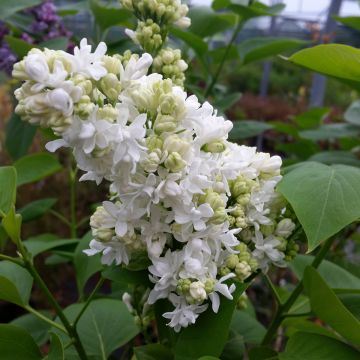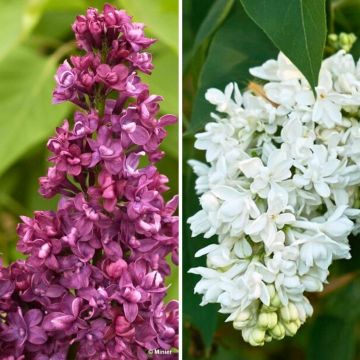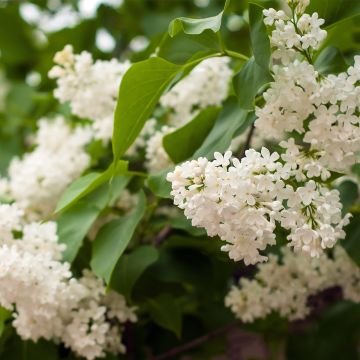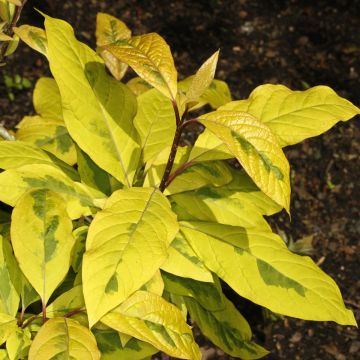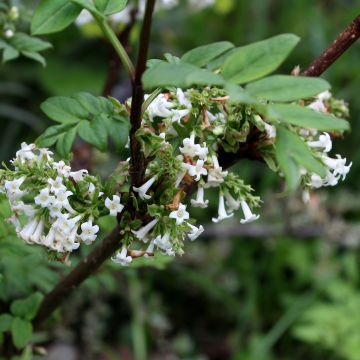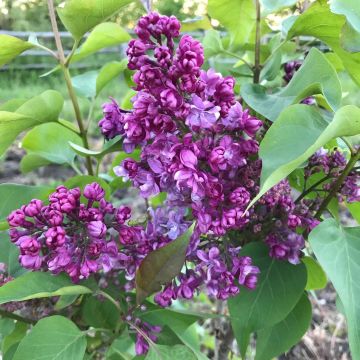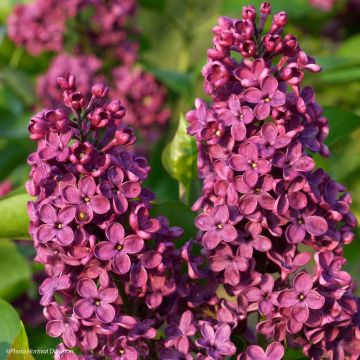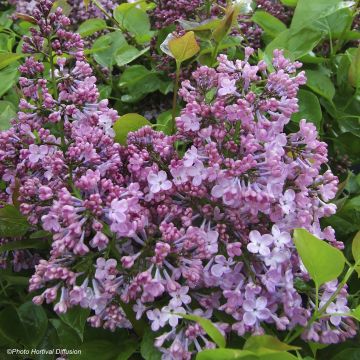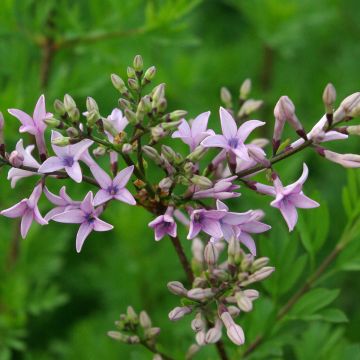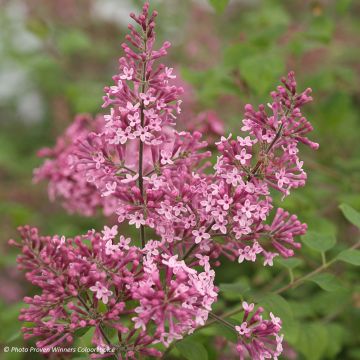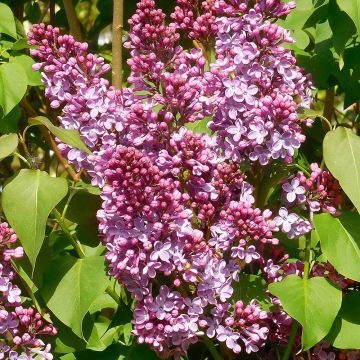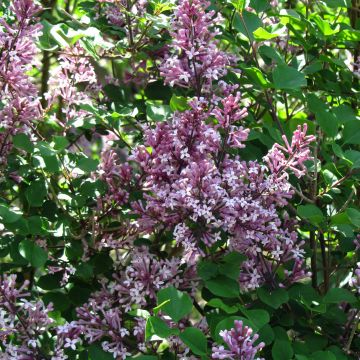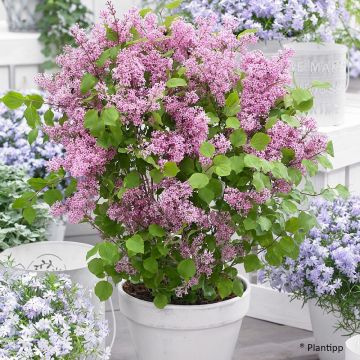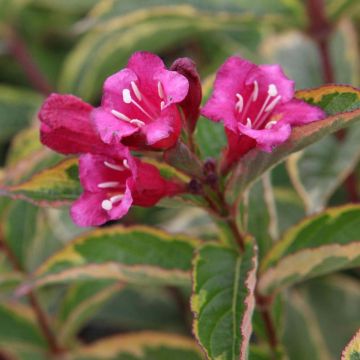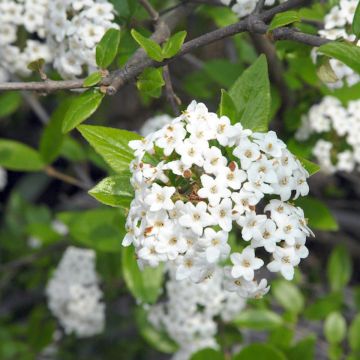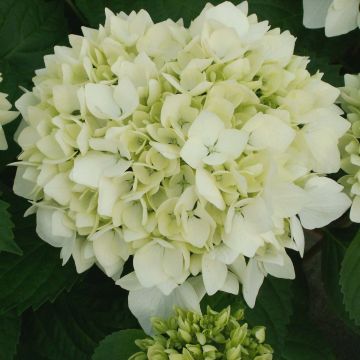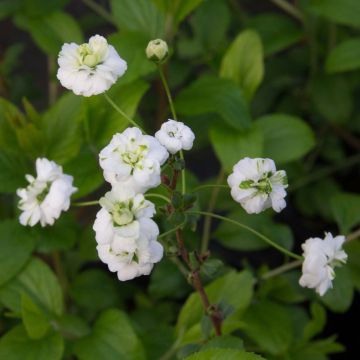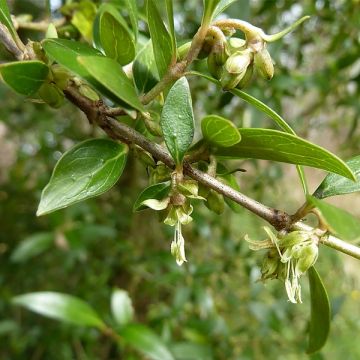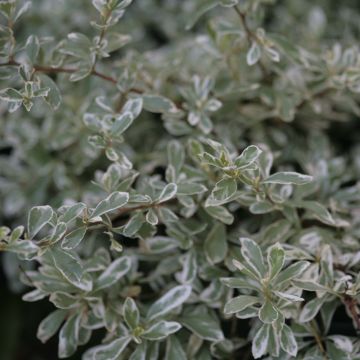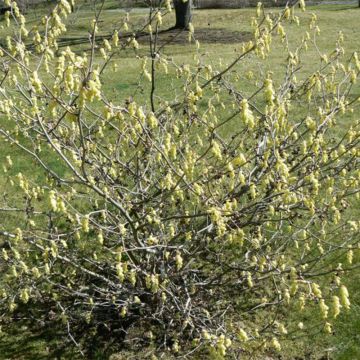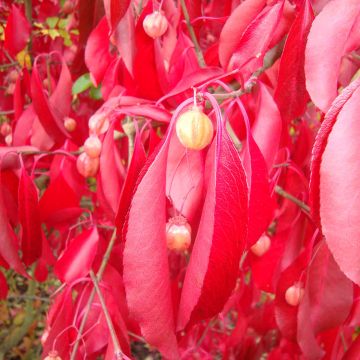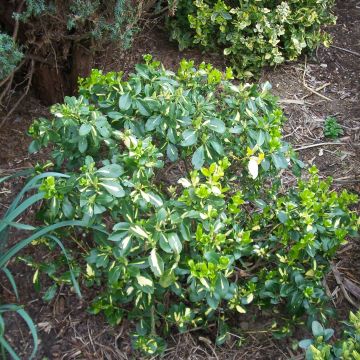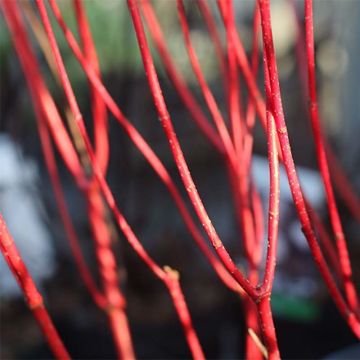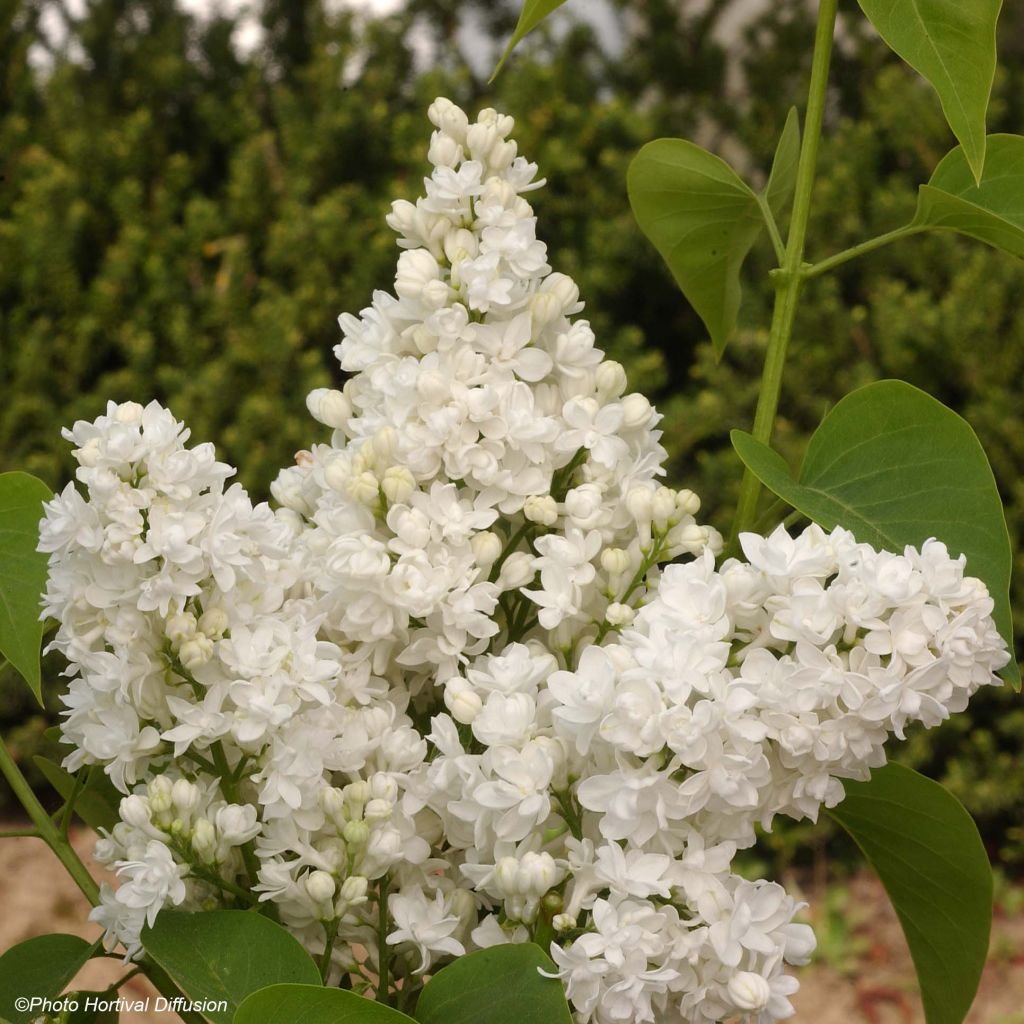

Syringa vulgaris Dentelle dAnjou - Common Lilac
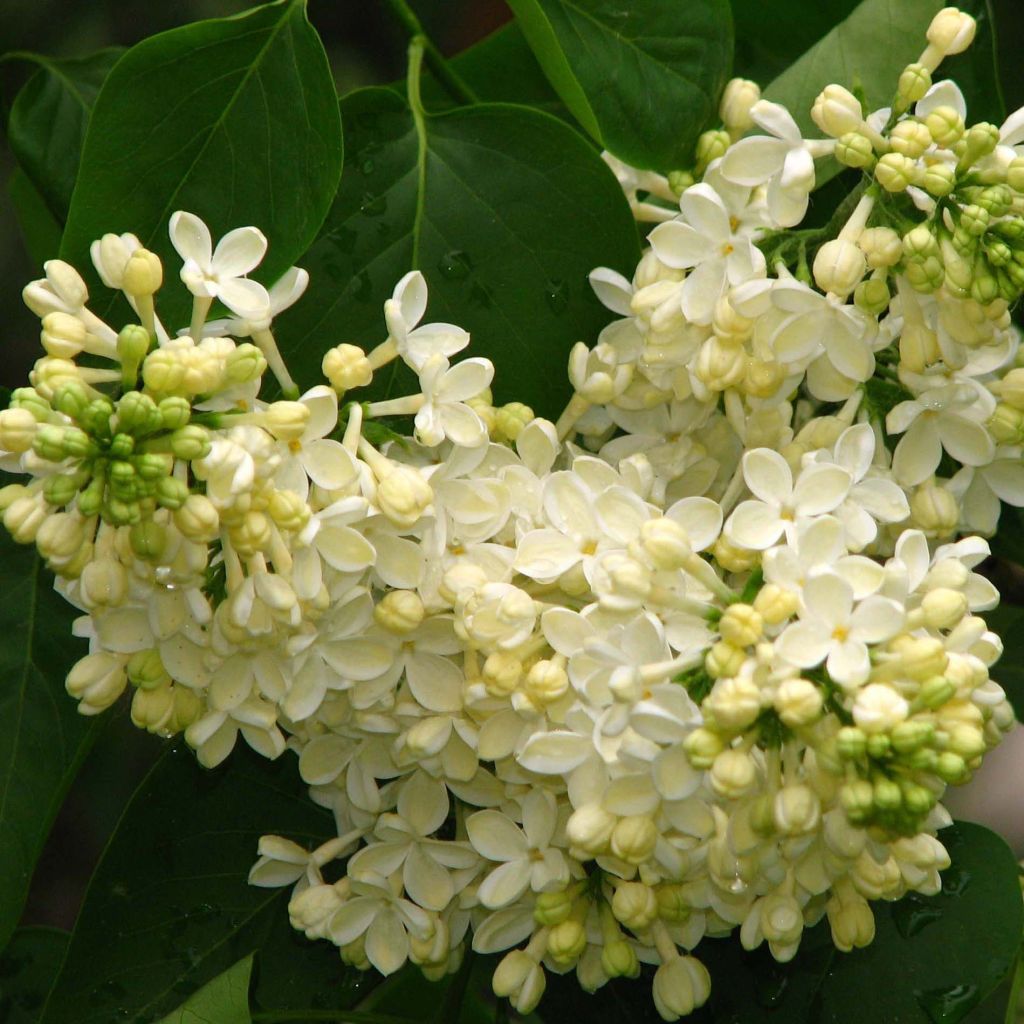

Syringa vulgaris Dentelle dAnjou - Common Lilac
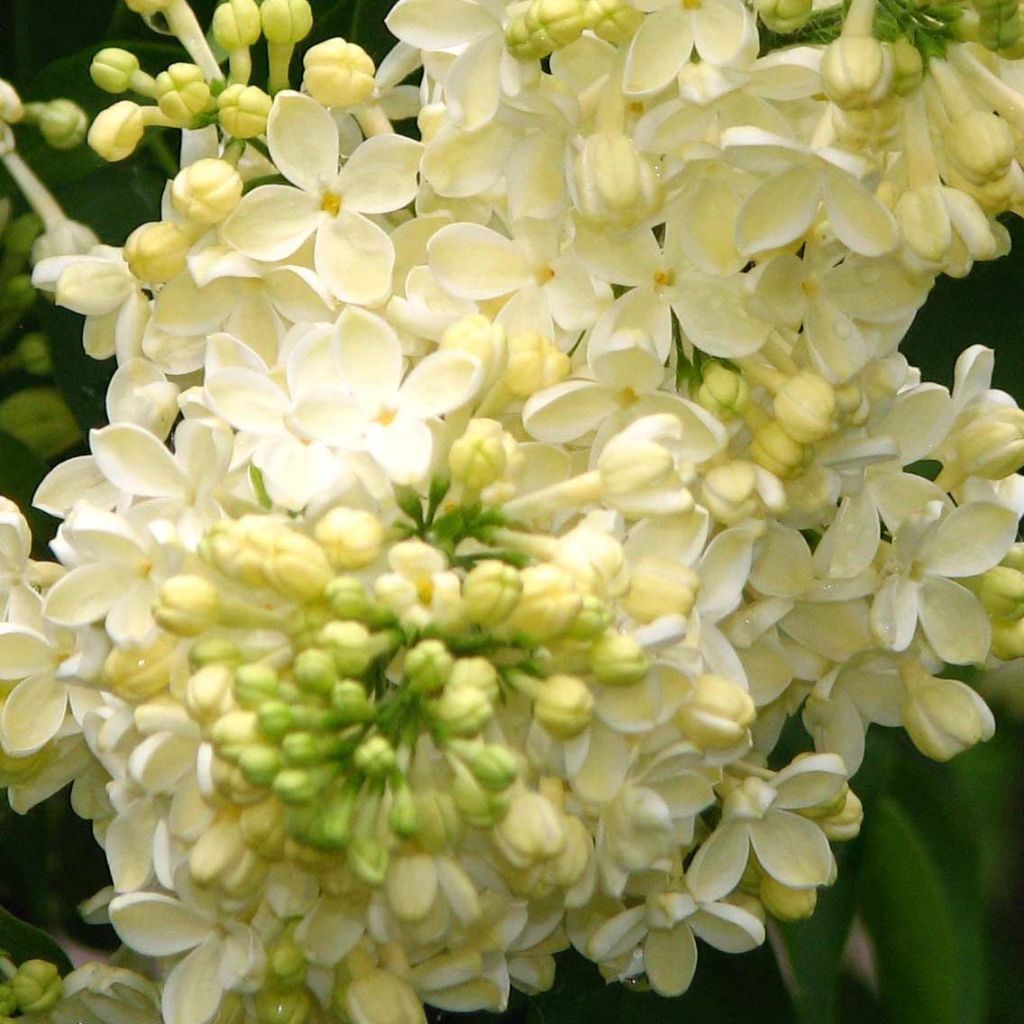

Syringa vulgaris Dentelle dAnjou - Common Lilac
Syringa vulgaris Dentelle dAnjou - Common Lilac
Syringa vulgaris Dentelle d'Anjou
Common Lilac, Lilac
Delivery on time as scheduled and young plant in good condition.
christophe, 22/10/2022
Why not try an alternative variety in stock?
View all →This plant carries a 24 months recovery warranty
More information
We guarantee the quality of our plants for a full growing cycle, and will replace at our expense any plant that fails to recover under normal climatic and planting conditions.
From €5.90 for pickup delivery and €6.90 for home delivery
Express home delivery from €8.90.
Does this plant fit my garden?
Set up your Plantfit profile →
Description
The Common Lilac 'Dentelle d'Anjou' is a recent French variety, derived from Syringa vulgaris, distributed by the Minier nurseries in Anjou since 2007. This deciduous bush with a dense and compact habit and healthy foliage is a beautiful improvement of 'Madame Lemoine', from which it inherited the beautiful white inflorescences loaded with double and well scented florets. It blooms in early spring, in April-May depending on the climate. Superb in a large flowering hedge, its flowers are naturally perfect for bouquets.
Fallen into disuse in the 1960s-1970s after the discovery of American or Asian lilacs, the European lilac and its hybrids are making a strong comeback in our gardens, like old roses which were disliked for their single flowering, and were therefore neglected in favour of modern hybrids.
Syringa vulgaris 'Dentelle d'Anjou', like all lilacs, is a bush of the Oleaceae family. We often forget that the common lilac, also known as the European Lilac, is actually native to Southeast Europe and the west of Asia, more precisely the Balkan Peninsula, and that it only arrived in Western Europe at the end of the renaissance. In nature, this wild plant with very fragrant blue-violet-purple flowers colonises the rocky hills and braves cold winters.
The 'Dentelle d'Anjou' variety forms a large bush with medium growth, an erect and compact habit, less than 4m (13 ft 1 in) high (usually 3m (9 ft 10 in)) and with a spread of 2m (6 ft 7 in), on average. Its leaves, deciduous, triangular and heart-shaped, 4 to 12 cm (1.6 to 4.7 in) long and 3 to 8 cm (1.2 to 3.1 in) wide, appear in spring, in a medium green shade, with a satin finish. Flowering takes place in April or May, depending on the climate. At the ends of one-year-old branches appear long compound clusters, called thyrsus, sometimes reaching 20 cm (7.9 in) in length. Their overall pyramidal shape is quite compact. The cream-coloured flower buds open into double flowers, the corolla forming a long tube at the base. Their colour is pure white. They diffuse a pleasant, quite strong, very floral fragrance.
Easy to grow in any drained soil, under almost all our climates, the Common Lilac 'Dentelle d'Anjou' is an essential bush in a flower garden. Use it, mixed with other mauve, pink or red varieties, abundantly, in large flowering hedges, along with single-flowered roses, mock oranges, deutzias, serviceberries, Itea or large buddleias (B.macrostachya, B.officinalis, B. alternifolia). A hedge of lilacs, flowering prunus, Chinese Almond, Japanese quinces and ornamental apple trees, planted above a sunken path, is a real enchantment in spring. It can also be used alone, surrounded by a bed of ground cover roses, in a small space dedicated to it, to make this modest subject a grandiose bush, covered in glory in the heart of spring.
Report an error about the product description
Syringa vulgaris Dentelle dAnjou - Common Lilac in pictures
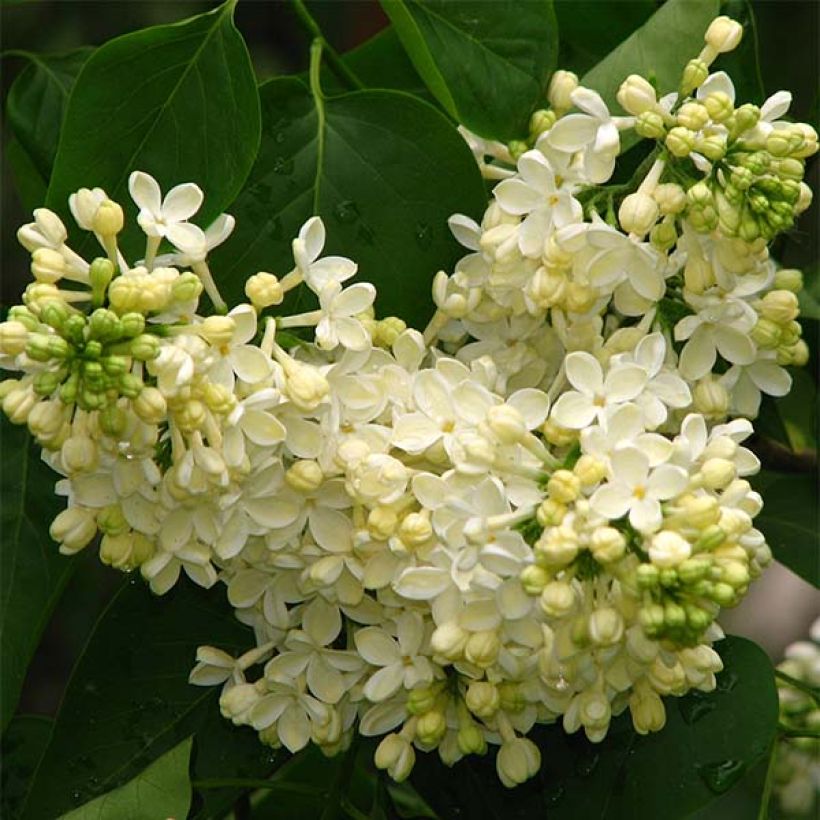

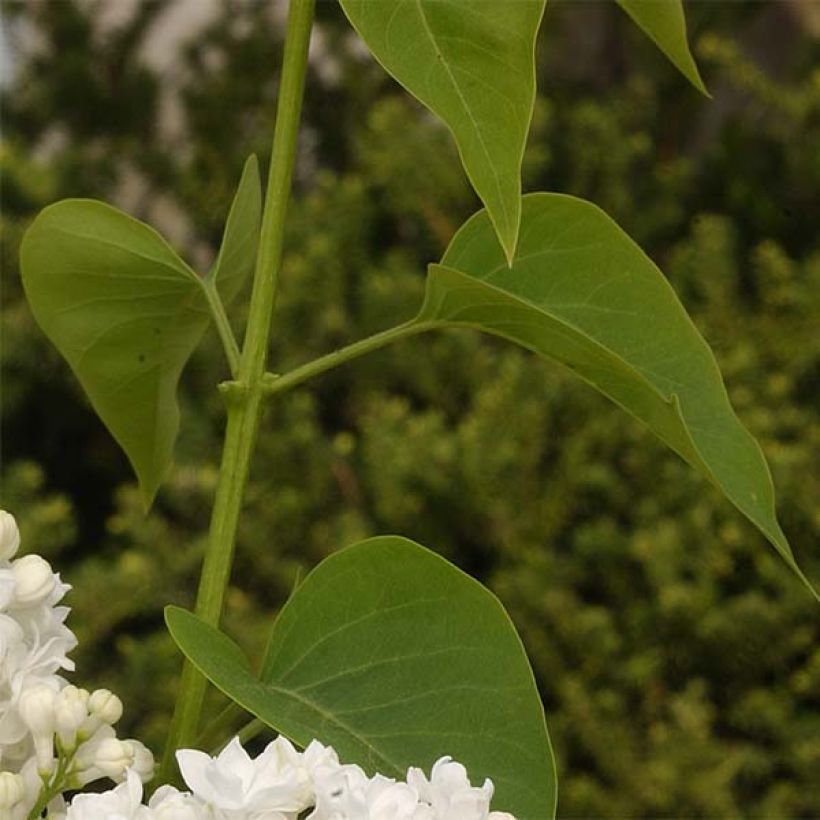

Plant habit
Flowering
Foliage
Botanical data
Syringa
vulgaris
Dentelle d'Anjou
Oleaceae
Common Lilac, Lilac
Cultivar or hybrid
Other Syringa - Lilac
Planting and care
The common Lilac appreciates planting in full sun, in a soil that remains quite moist, well-drained, even rocky. It can tolerate any type of soil, but prefers slightly calcareous soils and fears highly acidic soils. It will grow well in semi-shaded exposure, but flowering will be reduced. Its hardiness is excellent, beyond -15°C (5 °F). Easy to grow, it only requires mulching and regular watering in a dry climate during the summer, to maintain a certain level of humidity. while the common lilac grows happily in the south of our country, its large-flowered hybrids suffer from a lack of water that disfigures their thirsty vegetation. In any case, water it in the first few years in case of marked drought. You can prune the flowering shoots to make beautiful bouquets, or at the end of flowering to encourage the appearance of new flowers and avoid tiring the bush. Avoid severe prunings which limit the flowering of the following spring, unless your Lilac becomes too large.
Planting period
Intended location
Care
-
, onOrder confirmed
Reply from on Promesse de fleurs
Hedge shrubs
Haven't found what you were looking for?
Hardiness is the lowest winter temperature a plant can endure without suffering serious damage or even dying. However, hardiness is affected by location (a sheltered area, such as a patio), protection (winter cover) and soil type (hardiness is improved by well-drained soil).

Photo Sharing Terms & Conditions
In order to encourage gardeners to interact and share their experiences, Promesse de fleurs offers various media enabling content to be uploaded onto its Site - in particular via the ‘Photo sharing’ module.
The User agrees to refrain from:
- Posting any content that is illegal, prejudicial, insulting, racist, inciteful to hatred, revisionist, contrary to public decency, that infringes on privacy or on the privacy rights of third parties, in particular the publicity rights of persons and goods, intellectual property rights, or the right to privacy.
- Submitting content on behalf of a third party;
- Impersonate the identity of a third party and/or publish any personal information about a third party;
In general, the User undertakes to refrain from any unethical behaviour.
All Content (in particular text, comments, files, images, photos, videos, creative works, etc.), which may be subject to property or intellectual property rights, image or other private rights, shall remain the property of the User, subject to the limited rights granted by the terms of the licence granted by Promesse de fleurs as stated below. Users are at liberty to publish or not to publish such Content on the Site, notably via the ‘Photo Sharing’ facility, and accept that this Content shall be made public and freely accessible, notably on the Internet.
Users further acknowledge, undertake to have ,and guarantee that they hold all necessary rights and permissions to publish such material on the Site, in particular with regard to the legislation in force pertaining to any privacy, property, intellectual property, image, or contractual rights, or rights of any other nature. By publishing such Content on the Site, Users acknowledge accepting full liability as publishers of the Content within the meaning of the law, and grant Promesse de fleurs, free of charge, an inclusive, worldwide licence for the said Content for the entire duration of its publication, including all reproduction, representation, up/downloading, displaying, performing, transmission, and storage rights.
Users also grant permission for their name to be linked to the Content and accept that this link may not always be made available.
By engaging in posting material, Users consent to their Content becoming automatically accessible on the Internet, in particular on other sites and/or blogs and/or web pages of the Promesse de fleurs site, including in particular social pages and the Promesse de fleurs catalogue.
Users may secure the removal of entrusted content free of charge by issuing a simple request via our contact form.
The flowering period indicated on our website applies to countries and regions located in USDA zone 8 (France, the United Kingdom, Ireland, the Netherlands, etc.)
It will vary according to where you live:
- In zones 9 to 10 (Italy, Spain, Greece, etc.), flowering will occur about 2 to 4 weeks earlier.
- In zones 6 to 7 (Germany, Poland, Slovenia, and lower mountainous regions), flowering will be delayed by 2 to 3 weeks.
- In zone 5 (Central Europe, Scandinavia), blooming will be delayed by 3 to 5 weeks.
In temperate climates, pruning of spring-flowering shrubs (forsythia, spireas, etc.) should be done just after flowering.
Pruning of summer-flowering shrubs (Indian Lilac, Perovskia, etc.) can be done in winter or spring.
In cold regions as well as with frost-sensitive plants, avoid pruning too early when severe frosts may still occur.
The planting period indicated on our website applies to countries and regions located in USDA zone 8 (France, United Kingdom, Ireland, Netherlands).
It will vary according to where you live:
- In Mediterranean zones (Marseille, Madrid, Milan, etc.), autumn and winter are the best planting periods.
- In continental zones (Strasbourg, Munich, Vienna, etc.), delay planting by 2 to 3 weeks in spring and bring it forward by 2 to 4 weeks in autumn.
- In mountainous regions (the Alps, Pyrenees, Carpathians, etc.), it is best to plant in late spring (May-June) or late summer (August-September).
The harvesting period indicated on our website applies to countries and regions in USDA zone 8 (France, England, Ireland, the Netherlands).
In colder areas (Scandinavia, Poland, Austria...) fruit and vegetable harvests are likely to be delayed by 3-4 weeks.
In warmer areas (Italy, Spain, Greece, etc.), harvesting will probably take place earlier, depending on weather conditions.
The sowing periods indicated on our website apply to countries and regions within USDA Zone 8 (France, UK, Ireland, Netherlands).
In colder areas (Scandinavia, Poland, Austria...), delay any outdoor sowing by 3-4 weeks, or sow under glass.
In warmer climes (Italy, Spain, Greece, etc.), bring outdoor sowing forward by a few weeks.


































